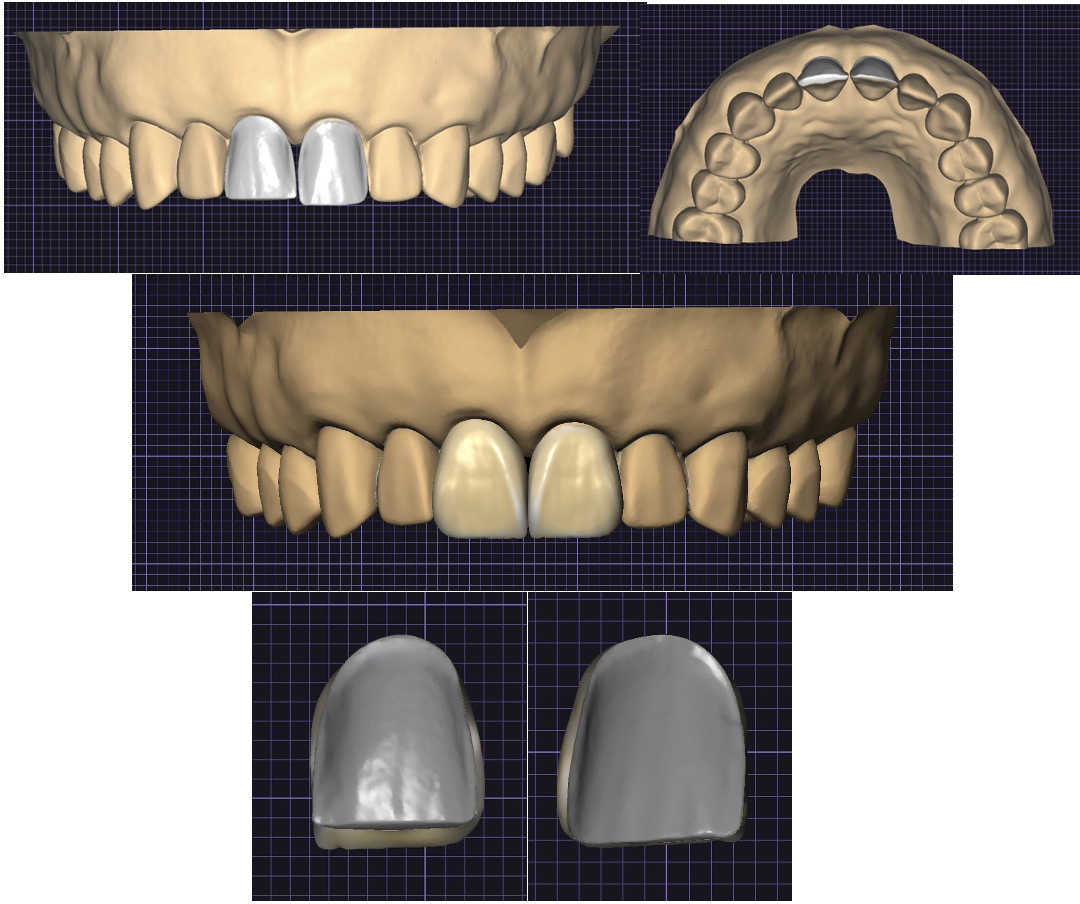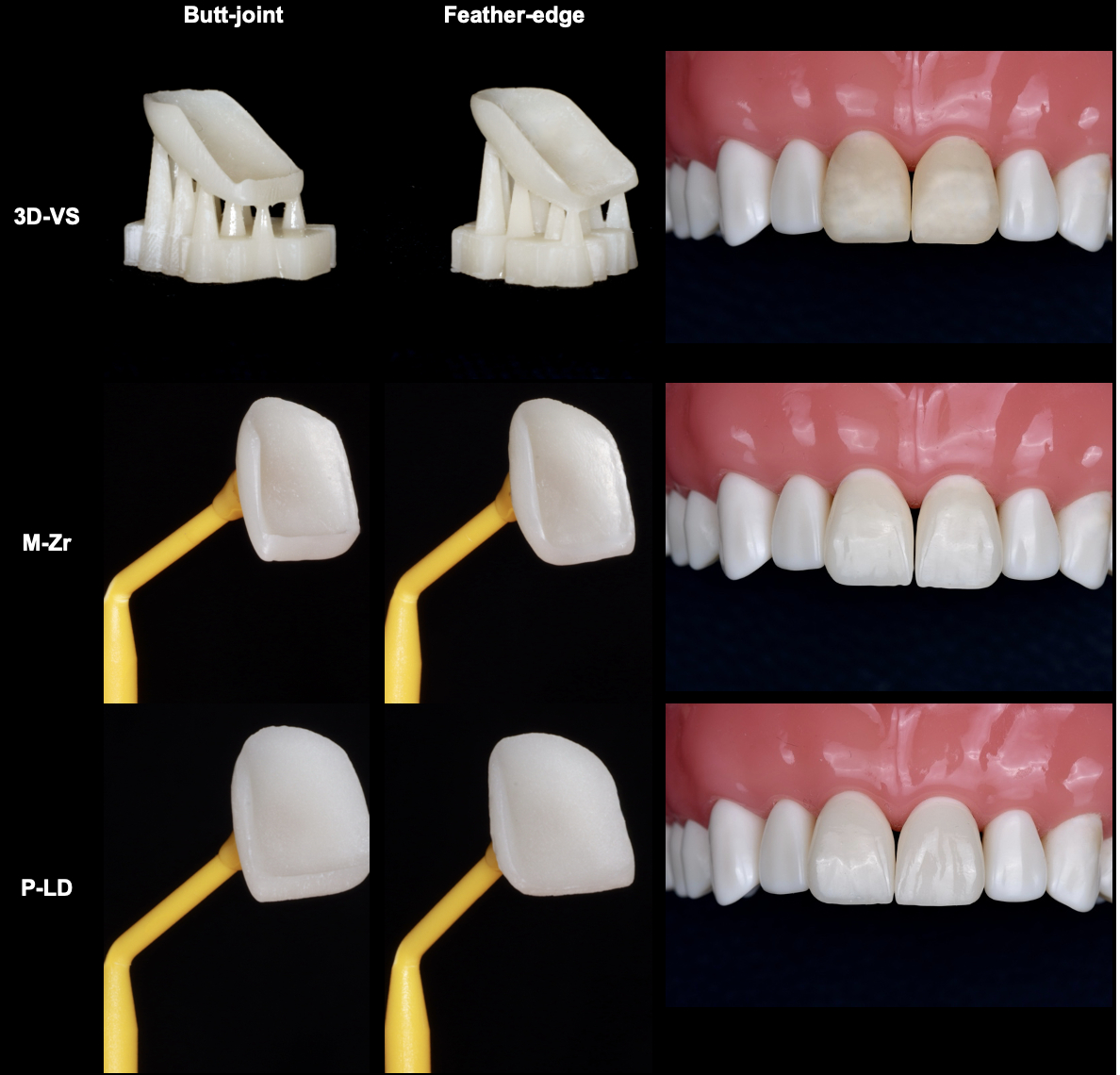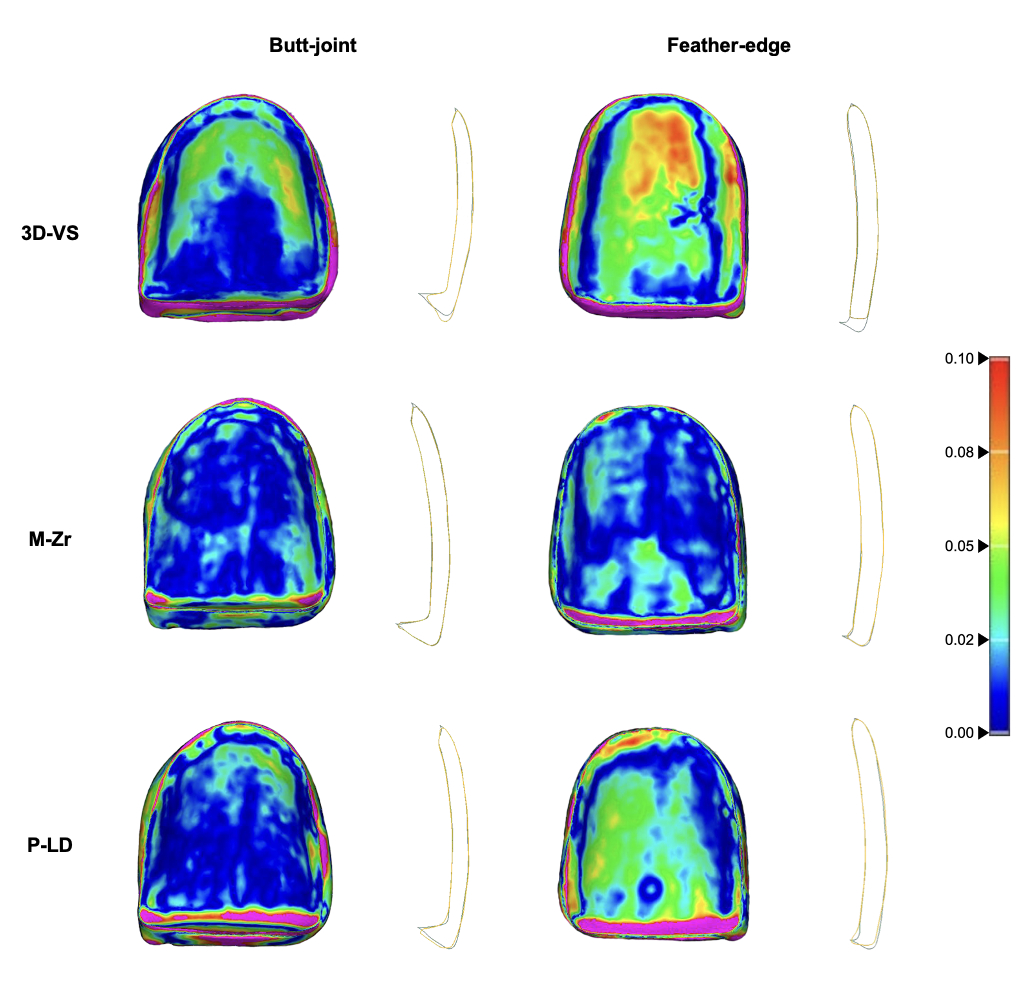IADR Abstract Archives
Influence of Butt-Joint and Feather-Edge Incisal Preparations on the Marginal and Internal Adaptation of Laminate Veneers Fabricated With Three Manufacturing Techniques
Objectives: To assess the influence of butt-joint and feather-edge incisal preparations on marginal and internal adaptation of 3D-printed, milled zirconia and pressed lithium disilicate laminate veneers.
Methods: Butt-joint and feather-edge veneer preparations were performed on the right and left maxillary incisors respectively. The preparations were scanned and laminate veneers were designed to obtain the reference standard tessellation language (STL) file. Laminate veneers (n=90) were fabricated using 3D-VS (3D-printing Varseosmile), M-Zr (milled zirconia) and P-LD (pressed lithium disilicate) for each preparation design. All laminate veneers were digitized to generate the test STL files to measure the 3D deviations from the reference file using a 3D software program. The marginal, internal adaptation and trueness were measured. Color maps were obtained to quantify the mean ±standard deviation of the 3D deviations between the reference and test STL files.
Results: Marginal discrepancy was higher in the feather-edge design than butt-joint design for all groups (p < 0.001). M-Zr represented the lowest marginal discrepancy with butt-joint design (20.60 μm ±2.36) compared with 3D-VS (51.95 μm ±4.33) and P-LD (45.14 μm ±2.39). The internal adaptation was statistically different between the three groups. In the incisal 1/3, internal adaptation of all groups with butt-joint design was better than feather-edge design (p < 0.001). The median trueness of 3D-VS was 30.4 μm with butt-joint design and 43.0 μm with feather-edge design (p < 0.001). Statistically, the median trueness of M-Zr differed significantly between butt-joint design (17.6 μm) and feather-edge design (20.2 μm). For P-LD, the trueness was 24.9 μm for butt-joint and 27.9 μm for feather-edge.
Conclusions: Milled zirconia veneers had better marginal and internal adaptation. Butt-joint design consistently exhibit better fit across all three materials. The marginal and internal adaptation for the three materials were within the acceptable clinical range.
Methods: Butt-joint and feather-edge veneer preparations were performed on the right and left maxillary incisors respectively. The preparations were scanned and laminate veneers were designed to obtain the reference standard tessellation language (STL) file. Laminate veneers (n=90) were fabricated using 3D-VS (3D-printing Varseosmile), M-Zr (milled zirconia) and P-LD (pressed lithium disilicate) for each preparation design. All laminate veneers were digitized to generate the test STL files to measure the 3D deviations from the reference file using a 3D software program. The marginal, internal adaptation and trueness were measured. Color maps were obtained to quantify the mean ±standard deviation of the 3D deviations between the reference and test STL files.
Results: Marginal discrepancy was higher in the feather-edge design than butt-joint design for all groups (p < 0.001). M-Zr represented the lowest marginal discrepancy with butt-joint design (20.60 μm ±2.36) compared with 3D-VS (51.95 μm ±4.33) and P-LD (45.14 μm ±2.39). The internal adaptation was statistically different between the three groups. In the incisal 1/3, internal adaptation of all groups with butt-joint design was better than feather-edge design (p < 0.001). The median trueness of 3D-VS was 30.4 μm with butt-joint design and 43.0 μm with feather-edge design (p < 0.001). Statistically, the median trueness of M-Zr differed significantly between butt-joint design (17.6 μm) and feather-edge design (20.2 μm). For P-LD, the trueness was 24.9 μm for butt-joint and 27.9 μm for feather-edge.
Conclusions: Milled zirconia veneers had better marginal and internal adaptation. Butt-joint design consistently exhibit better fit across all three materials. The marginal and internal adaptation for the three materials were within the acceptable clinical range.



